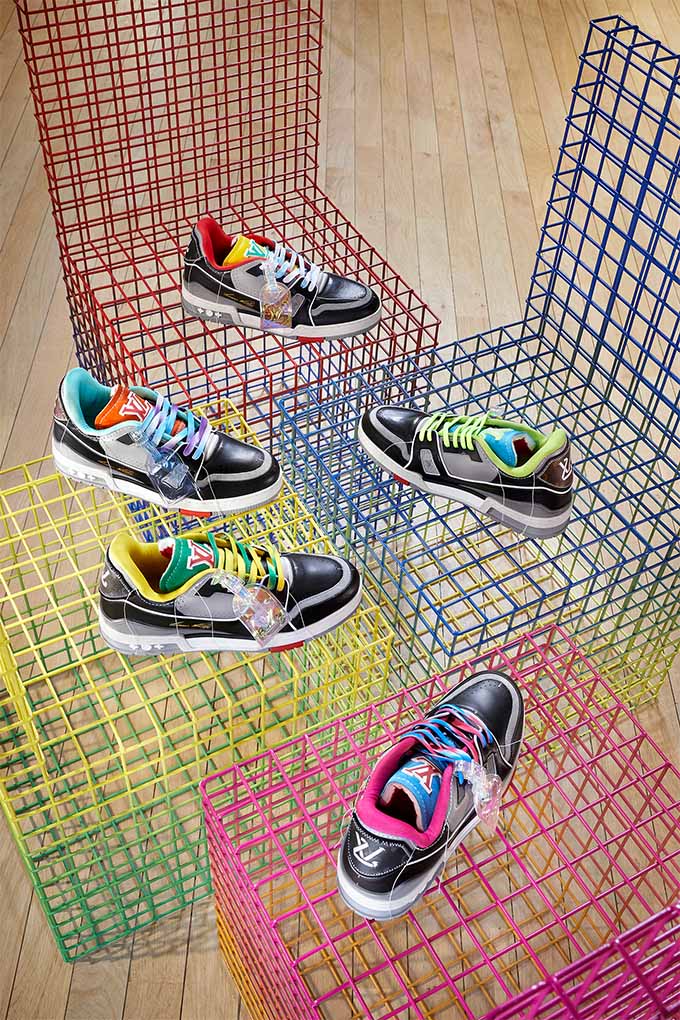Fashion loves a good rerun—from trend cycles, revivalism and nostalgia dressing to archive reissues, ‘regenerated’ capsules and the rise of the vintage archivist. With upcycling declared the biggest trend of this summer, the practice has largely been pioneered by emerging and independent designers such as Marine Serre, 1/OFF and Patagonia. However, for major luxury houses, while ideas might be upcycled, the materials used to realise them rarely are.

There are a few exceptions, of course. Take Upcycled by Miu Miu, a limited edition capsule collection of 80 reworked vintage looks from the 1930s to 1980s; or Maison Margiela’s Recicla line of repurposed and upcycled garments from varying sources and periods, inspired by the founder’s Replica line launched in 1994 (then a recreation of decades-old pieces). At Hermès, meanwhile, the Petit h workshop was launched in 2010 with the sole purpose of giving new life to leftover, unwanted and forgotten materials.
In the wake of the pandemic-induced £125bn to £142bn (S$234bn to S$266bn) worth of excess inventory from the SS20 collections (more than double the average of other years), changes in the luxury fashion industry are coming thick and fast. It was during the UK lockdown that one of luxury fashion’s leading sustainability pioneers, Stella McCartney, reconsidered her brand operations, developing an A to Z Manifesto—each letter illustrated by celebrated artists including Cindy Sherman, Olafur Eliasson and Urs Fischer—underlined by stark statistics on the fashion industry and consumption, such as, “Less than one per cent of the material used to produce clothing is recycled into new clothes, meaning 99 per cent of all textiles and fashion is waste,” and “If we stay on the path we are on, clothing waste accumulated between today and 2025 will weigh as much as today’s global population.”

“During lockdown last year, we launched our A to Z Manifesto, which is a map of our DNA and a blueprint of our future intentions; a guiding alphabet to hold ourselves accountable for our values, what we do and where we want to go,” McCartney tells Vogue. “The letter ‘R’ in the manifesto stands for ‘repurpose’, showing we are truly committed as a house to repurposing and upcycling fabrics already in existence, whether that be our old fabrics or looking at ways to get hold of other people’s unused fabrics.”

Evidently, after years of exalting the new, the latest thing in luxury fashion is embracing the old. Chloé artistic director Gabriela Hearst’s new-look Edith bags are made from 50 vintage Ediths that were upcycled and refreshed with surplus autumn/winter 21 fabrics; Virgil Abloh’s spring/summer 21 LV Trainers for Louis Vuitton men’s, made from upcycled leather from prior LV Trainer collections as well as the house’s Be Mindful accessories collection, a capsule crafted from upcycled, reclaimed materials.

Balenciaga’s spring/summer 21 collection is comprised of 93.5 percent plain materials that are either certified sustainable or upcycled; Maison Michel’s Legacy Parade capsule collection is made from untapped fabrics from the brand’s archive; and Loewe’s The Surplus Project crafts bags exclusively with excess leather from previous collections. Additionally, in April, the LVMH group launched Nona Source, an online resale platform offering emerging creatives and brands access to the group’s fabrics and leathers at an average of 70 percent off the original wholesale price, encouraging creative reuse of materials that may otherwise remain unused in archives.

“I find the idea of repurposing hugely exciting,” says McCartney. “It allows us to think creatively and create beautiful, limited edition pieces—such as the dress we made for our A to Z Manifesto that used strips of fabric from nine previous seasons and spanned five years.” She concludes: “I truly believe this way of working is the future of fashion.”





